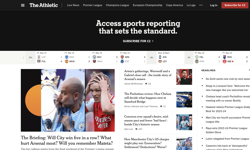Publishers and advertisers alike all over the world are still experimenting with the best ways to capitalise on this new platform. The one thing that both do agree on, however, is that the tablet presents a unique opportunity – whether the opportunity is to grow circulation, arrest circulation decline, offer existing readers a deeper level of engagement, grow advertising revenues or win new advertising business is all yet to fully play out. Whatever happens though, the tablet is here to stay and it is here to disrupt the print industry.
So one thing is clear about the tablet – consumers have voted with their wallets and have given it – or more accurately, given the iPad, a resounding thumbs up. Global sales of the iPad alone have reached 15 million; add other entrants and the tablet has become the fastest growing new consumer electronic category in history – a record held previously by the DVD player. Some estimates have iPad sales alone reaching 45 million by the end of 2011. Understandably, this has made every other consumer electronics manufacturer sit up and take notice. Some have already come to market and others will do so by the end of this year. Motorola, BlackBerry, Dell, Google, Lenovo, Viewsonic, HP, Acer and many more are all lining up for a slice of the pie. And not to mention the iPad2, about which Wired has said: “It's clearly the strongest tablet computer and I genuinely don't think it has anything to worry about from any competitor just yet.”
So, in short, this is a platform with a robust future and magazine publishers everywhere are playing with different business models to see what works – from full paid-for magazines with added extra whizz bang to free chunks of editorial content. This is a land-grab moment.
So, what should a magazine look like on a digital platform? Does it slavishly follow the print model; an edited, packaged, immersive narrative with clear beginning and end points? The very antithesis to the web. Or does it need to play to the strengths of the platform with multi-media, content sharing and the ability to dig deeper into editorial by going online. I suspect a hybrid creature will emerge with a healthy mix of both.
All these questions, of course, are also being asked in advertising, creative and media agencies across the globe. What is the potential? Is the bandwagon full yet? Is there any benefit in being early to market with bespoke tablet ad executions? Again, there is a lot of testing going on. Initially, the temptation has been to use video assets that were made for TV and expensive to produce or simply running extra executions from the ad shoot. While there is no harm in doing this, it probably is not the most effective use of the medium. More recently, some advertisers have been creating ads that are tailored for the iPad and, indeed, publishers have been creating ads themselves with in-house design teams. Condé Nast US conducted a survey of users of their magazine apps and, based on the response, have subsequently published some general suggestions for advertisers as they consider how to approach the tablet. The four main tips are:
1. New medium, new message. Create a compelling experience that is self-contained and only available in the tablet environment.
2. Don’t leave them guessing. Many iPad owners are new to Apple; don’t assume they know all the tricks. Include clear calls to action so users know how to engage, and use clear language that sets correct expectations. Visual cues / icons must be visible and intuitive.
3. Tell a story. This is an ideal environment to tell your brand / campaign story – don’t sell it short and do not repeat the same ad multiple times
4. Lead them down the purchase funnel. Inspiration is great but activation is the measure of success. Linking to the homepage is not enough – lead them directly to product, with as few steps as possible. Give them e-commerce!
Premium appeal
Good advice, I think, and it is clear that marketers are taking heed and beginning to produce excellent work specifically for this device – witness Burberry, Audi and Chanel in the Wired December 2010 issue. Notice also that these are premium advertisers and while, of course, there are plenty of FMCG and mid-market advertisers doing great work on the iPad, the interesting thing is that, despite this being a digital medium, the premium sector is really beginning to pick up the ball and run with it. Why? Well, while there are plenty of opportunities online to deliver high production value ad executions that protect reputations, the sticking point tends to be lack of control. On the other hand, the tablet offers far more control as well as an ability to display peerless backlit imagery, stunning video and good quality sound. The hand held nature of the device also allows the user to get very intimate with the brand. All of which allows brands to really connect with readers in a new and very exciting way.
Measurement issues
Having said all that, it’s all very well proclaiming the tablet as the Holy Grail for advertisers, but the awesome levels of engagement and immersion need to be accurately measured and we need to ascertain who is being engaged and immersed. So everyone’s focus is now on analytics, specifically: a) What can publishers offer now and in the future and b) Given Apple’s strict policy of not sharing customer data, how does that affect publishers’ ability to monetise their content.
Well, it looks like there is already a solution for the former, in that some publishers are now offering behavioural analytics to advertisers and others are suggesting that this facility is imminent. Omniture, for instance, have their SiteCatalyst solution. This software allows publishers to track what pages were looked at, top content, user journeys (pages in order), what multimedia was activated, how many times, how long for and what links were activated. For users viewing offline, this data will be stored in a cache, and captured when they are next online. It will also be able tell the geographical distribution of users.
It is really Apple’s data policy that is causing publishers to sweat. With Apple jealously guarding the demographic information of the people who download any given app from the iTunes music store, publishers are a bit hobbled. The counter-argument to that of course is that these publishers have a fully-rounded picture of the reader of their print editions with demographic data coming out of their ears from years of readership surveys. So, in the short term, it only requires a small leap of faith for the advertiser to buy into the fact that the audience reading on the iPad is likely to be roughly the same. But, this being digital - the most accountable of all media - words and phrases like “roughly” and “leap of faith” are anathema. It is physically possible to accurately know who, what, when, where and how – ergo, it should be physically possible to report.
A question of trust
Interestingly, the only question missing from that list is ‘why’. And I would venture that the ‘why’ is potentially the most important question of all. If you know who is engaging with your ad, for how long, where they are at the time, what time of day it is and so on, without understanding what their motivation is, you still only have half the picture. You have the delivery and the engagement but unless they are immediately driven to purchase and do so, you haven’t measured consumption.
This last piece of the jigsaw does not need to be left to gut feel however. There is a raft of persuasive research out there to adequately prove that magazines are the most effective medium at delivering this vital ingredient – persuading the consumer to act.
Research shows that the ads in a tablet version of a magazine are viewed in the same light as those in a print version; ie. an essential ingredient of the whole experience. In a sense, advertisers are buying a share of the trust between magazine and reader.
James Tye, chief executive of Dennis Publishing, says: “One of the major shifts in advertising is that brands have to earn the right to be consumed. You can't just tell people to consume. Magazines have earned that right over many, many years. Advertisers can piggyback on the back of it.”
The unique relationship between readers and the time they devote to their favourite magazines heightens the impact of the advertising within. Albert Read, general manager of Condé Nast, said: “The time you spend reading a magazine is potentially an hour or two hours of uninterrupted time.
“It is really focused. You are in that particular mindset. It is the perfect time to introduce new ideas, new products; that is why brands have successfully used magazines for the past 40 years.”
So, the challenge for publishers and advertisers alike as we embark on this exciting journey together, is to continue to deliver on that promise, to continue to tell stories, engage, inform, entertain and paint beautiful pictures. The good news is that the tablet offers an even more diverse palette.










